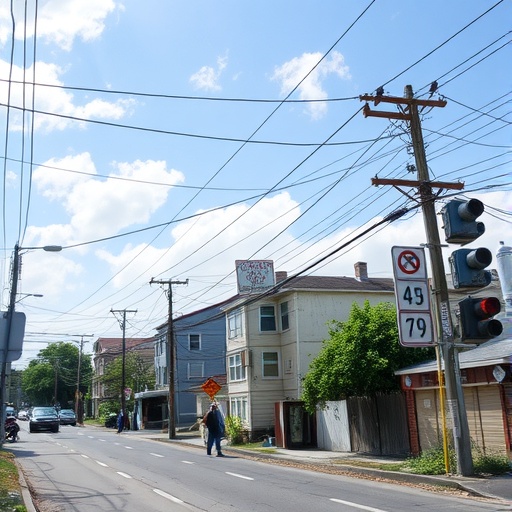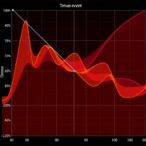
In the escalating battle against climate change, urban environments face a particularly fierce adversary: the intensifying urban heat island (UHI) effect. As cities expand and densify, they inadvertently create localized hotspots where temperatures soar well above surrounding rural areas. This phenomenon presents a significant challenge to global sustainability efforts, particularly those encapsulated in the United Nations’ Sustainable Development Goal 11 (SDG 11), which aspires to make cities inclusive, safe, resilient, and sustainable. The recent study by Lao, Istrate, and Pilla, published in npj Urban Sustainability, offers groundbreaking insights into how vulnerable urban communities are navigating this heat stress by adopting community-based adaptation strategies, thereby charting a critical path forward for urban heat mitigation across diverse cities worldwide.
Urban heat adaptation, while conceptually straightforward, is a complex socio-environmental challenge, especially among vulnerable populations disproportionately affected by rising temperatures. These communities often endure inadequate housing, limited access to green spaces, and insufficient infrastructural resilience, compounding the risks posed by extreme heat events. Lao and colleagues delve deep into the fabric of these community responses, scrutinizing how grassroots initiatives emerge, evolve, and interface with broader policy frameworks under the guiding vision of SDG 11. Their work underscores that adaptation cannot be a top-down mandate but must embrace the nuanced, lived realities of those most exposed to health and socio-economic dangers malevolently amplified by urban warming.
The researchers present a multi-dimensional exploration into the adaptability of vulnerable urban enclaves, focusing on how localized knowledge and community agency interact with technological and institutional interventions. Central to their thesis is the articulation of “community-based urban heat adaptation” (CBUHA), which differs fundamentally from generic climate adaptation by centering local voices and experiences. This method embodies a bottom-up paradigm that enables affected populations to tailor adaptive actions aligned with cultural, economic, and environmental contexts. Such an approach is essential, the authors argue, because uniform cooling strategies often fail to penetrate or resonate in disenfranchised neighborhoods burdened by systemic inequities.
.adsslot_hCayY3dFiW{ width:728px !important; height:90px !important; }
@media (max-width:1199px) { .adsslot_hCayY3dFiW{ width:468px !important; height:60px !important; } }
@media (max-width:767px) { .adsslot_hCayY3dFiW{ width:320px !important; height:50px !important; } }
ADVERTISEMENT
Importantly, Lao et al. dissect the mechanisms through which communities harness both traditional and novel adaptation tools. These range from the strategic use of urban vegetation to microclimate modification techniques such as reflective roofing and permeable pavements, alongside social innovations like heat health watch/warning systems designed and disseminated by local groups. The integration of these measures reveals an emerging hybrid model where technology complements rather than supplants community wisdom and social cohesion. The study highlights that the social capital within vulnerable populations—networks of trust, cooperation, and shared knowledge—is a formidable asset in translating adaptation intent into effective action.
One striking element of the research lies in its investigative framework, which employs mixed methods bridging qualitative ethnographic studies with geospatial analysis and urban climatic modeling. This triangulation enables a holistic understanding of heat vulnerability—not merely as a physical exposure but as a product of layered socio-spatial dynamics. Using geospatial heat mapping alongside community participatory mapping, Lao and colleagues reveal detailed temperature distributions and vulnerability indices at the neighborhood scale, exposing critical “heat hotspots” often invisible in conventional city-wide assessments. This granular approach empowers communities and policymakers alike to target interventions with surgical precision.
The interplay between governance structures and community initiative also features prominently in the analysis. The study reveals that while local governments recognize heat risks as a pressing urban issue, bureaucratic inertia, budget constraints, and competing policy priorities frequently hamper comprehensive adaptive responses. Here, the authors advocate for embedding community-driven adaptation within formal urban planning processes to avoid fragmentation and ensure scalability. They propose the development of multi-level governance mechanisms fostering continuous dialogue and resource exchange among municipal authorities, civil society, and vulnerable residents, thereby institutionalizing adaptive co-management.
Another key insight revolves around the intersectionality of vulnerabilities—how factors such as age, gender, income, and health status intertwine to amplify heat risk. The paper highlights that elderly populations, outdoor laborers, and marginalized socioeconomic groups experience compounded exposure and sensitivity to heat extremes. Consequently, equitable adaptation must incorporate social protection measures including access to cooling centers, subsidized energy for air conditioning, and public health outreach tailored for at-risk demographics. The authors stress that neglecting these intersectional dimensions risks perpetuating and deepening existing urban inequalities rather than ameliorating them.
Furthermore, Lao and colleagues discuss the implications of urban morphology and infrastructural form in shaping adaptation potential. Compact, high-density areas with scarce green spaces suffer heightened heat retention, whereas neighborhoods that integrate urban forestry and blue infrastructure demonstrate markedly improved microclimates. This underscores the necessity of synergistically embedding nature-based solutions within urban design principles, not only to reduce temperatures but also to yield co-benefits such as air quality improvement, stormwater management, and enhanced biodiversity. The study emphasizes that such ecosystem-based adaptation measures are vital complements to purely engineered cooling technologies.
Climate projections compound the urgency of these adaptation imperatives by illustrating an increasingly hostile urban heat future. The authors analyze model scenarios forecasting heatwaves of unprecedented frequency and intensity, warning that without robust community engagement and systemic change, vulnerable city dwellers will bear disproportionate and escalating harms. Their forward-looking perspective identifies knowledge gaps and calls for sustained monitoring, adaptive learning frameworks, and the mainstreaming of heat adaptation into disaster risk reduction strategies. This proactive stance challenges conventional reactive models, advocating a resilience-building ethos that anticipates rather than merely responds to urban heat threats.
Underlying the entire discourse is an ethical dimension threading through the study: the right to urban habitability and the imperative of justice in climate adaptation. Lao and colleagues argue passionately that urban heat adaptation should not be a privilege reserved for affluent districts but must constitute a universal entitlement anchored in the principles of environmental justice. They call for reframing adaptation from a technocratic agenda to a social justice movement, one that empowers vulnerable communities as agents of change rather than passive recipients of aid. This repositioning aims to democratize climate resilience and foster inclusive urban futures.
Practically, the paper presents case studies showcasing successful instances of community-led heat adaptation from cities spanning different continents and climatic zones. These vignettes illustrate creative, locally originated strategies such as community gardens functioning as “cool islands,” cooperative efforts to retrofit housing insulation, and grassroots advocacy influencing municipal cooling policies. Such empirical evidence concretizes theoretical constructs, demonstrating the feasibility and transformative potential of community-based urban heat adaptation. It also offers valuable lessons and replicable models for other cities wrestling with similar climatic challenges.
Technological innovation also plays a nuanced role within these narratives. Lao et al. spotlight the emergent use of low-cost sensor networks enabling communities to monitor ambient temperatures in real-time and correlate heat stress data with health outcomes. These citizen science initiatives democratize environmental monitoring, generate locally relevant data, and foster awareness and engagement. When coupled with mobile communication platforms distributing heat alerts and adaptation tips, technology becomes a vital facilitator of resilience, provided its deployment is inclusive and attuned to varying levels of digital literacy.
Critically, the authors warn against overreliance on technology as a panacea, emphasizing that tools must be embedded within participatory processes that respect local contexts and capacities. They call for interdisciplinary collaboration bridging urban climatology, social sciences, public health, and urban planning disciplines to develop holistic adaptation frameworks. This integrated approach is positioned as essential for crafting interventions that are scientifically robust, socially just, and operationally effective.
The study’s policy implications resonate strongly with international urban sustainability agendas. By aligning heat adaptation efforts with SDG 11’s targets, the authors advocate for synergy between climate action, health promotion, and urban equity. Their findings highlight the need for dedicated funding streams, capacity-building, and inclusive policy design to ensure that vulnerable communities are not sidelined but actively engaged in shaping their thermal environments. This alignment advances the normative vision of cities as sites of innovation and equity in the face of global environmental change.
In sum, Lao, Istrate, and Pilla’s research presents a compelling, richly textured roadmap for strengthening community-based adaptation to urban heat under the banner of sustainable urban development. Their insights challenge prevailing paradigms by anchoring adaptation in the lived experiences and agency of vulnerable populations, calling for integrated, equity-centered, and science-informed strategies. As urban temperatures continue to climb and heat waves intensify globally, their work offers timely guidance to policymakers, practitioners, and communities striving to create cooler, healthier, and more just cities for all.
Subject of Research: Community-based urban heat adaptation strategies within vulnerable populations under Sustainable Development Goal 11.
Article Title: Navigating vulnerable community-based urban heat adaptation under SDG 11.
Article References:
Lao, X., Istrate, AL. & Pilla, F. Navigating vulnerable community-based urban heat adaptation under SDG 11. npj Urban Sustain 5, 49 (2025). https://doi.org/10.1038/s42949-025-00235-7
Image Credits: AI Generated
Tags: climate change resiliencecommunity-based adaptation strategiesextreme heat event responsesgrassroots initiatives for heat mitigationinfrastructure resilience in citieslocalized temperature hotspotsSDG 11 and climate adaptationsocio-environmental challenges in citiessustainable urban developmenturban heat island effecturban sustainability challengesvulnerable urban populations



